Light travels in straight lines through empty space. If it hits an object some of it is reflected back and the rest is absorbed by the object. It is this reflection of light that allows us to see objects around us. The walls, tables and chairs in your room don’t emit their own light, you can see them because they reflect light either from the sun or artificial light.
When light hits a transparent object ( a window is a good example of this ) some is absorbed and reflected but most passes through.
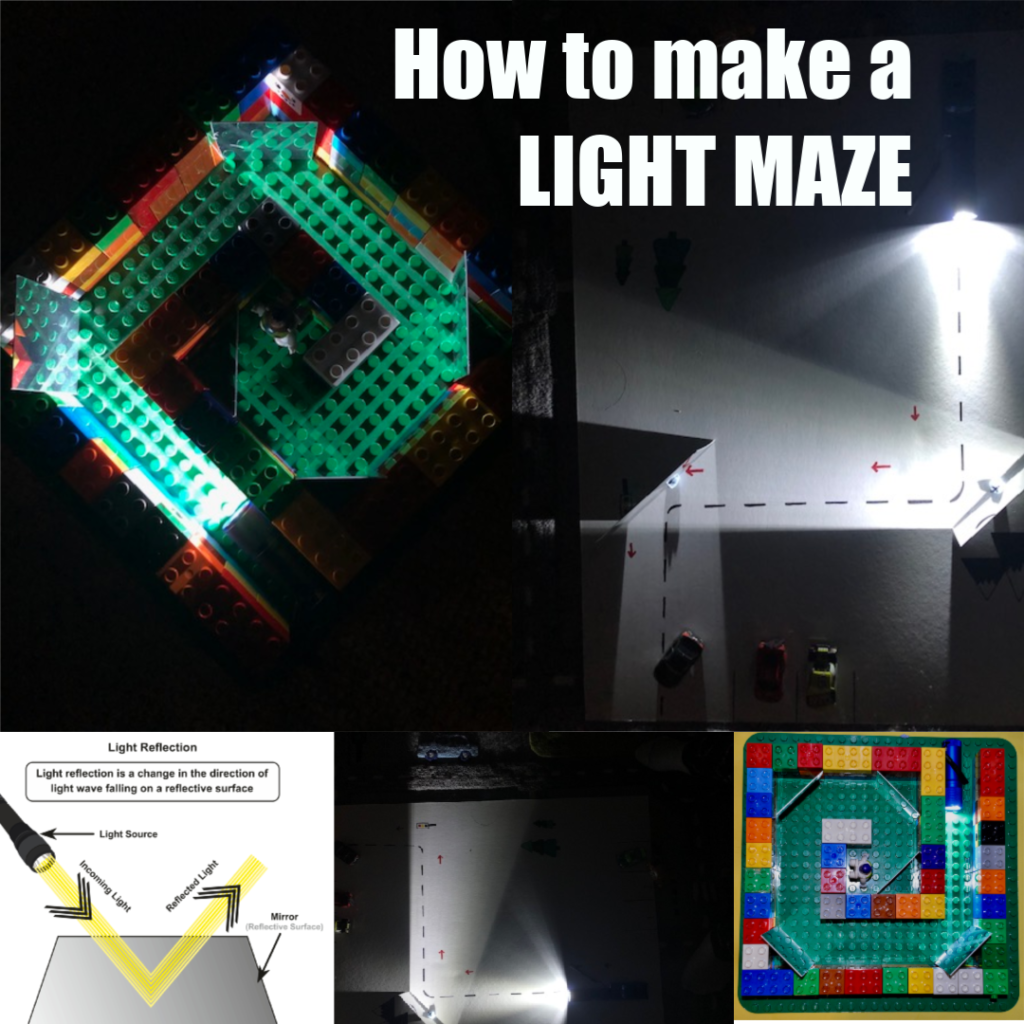
How does light travel?
Light comes from a light source. This could be the Sun, a torch, a fire or a candle.
Light travels in straight lines and cannot bend. In the mazes below, we used mirrors to reflect light around corners.
When a light ray hits a mirror, it is reflected off the mirror which changes the direction of the light. The angle of the reflected light is the same as the angle of the incoming light.
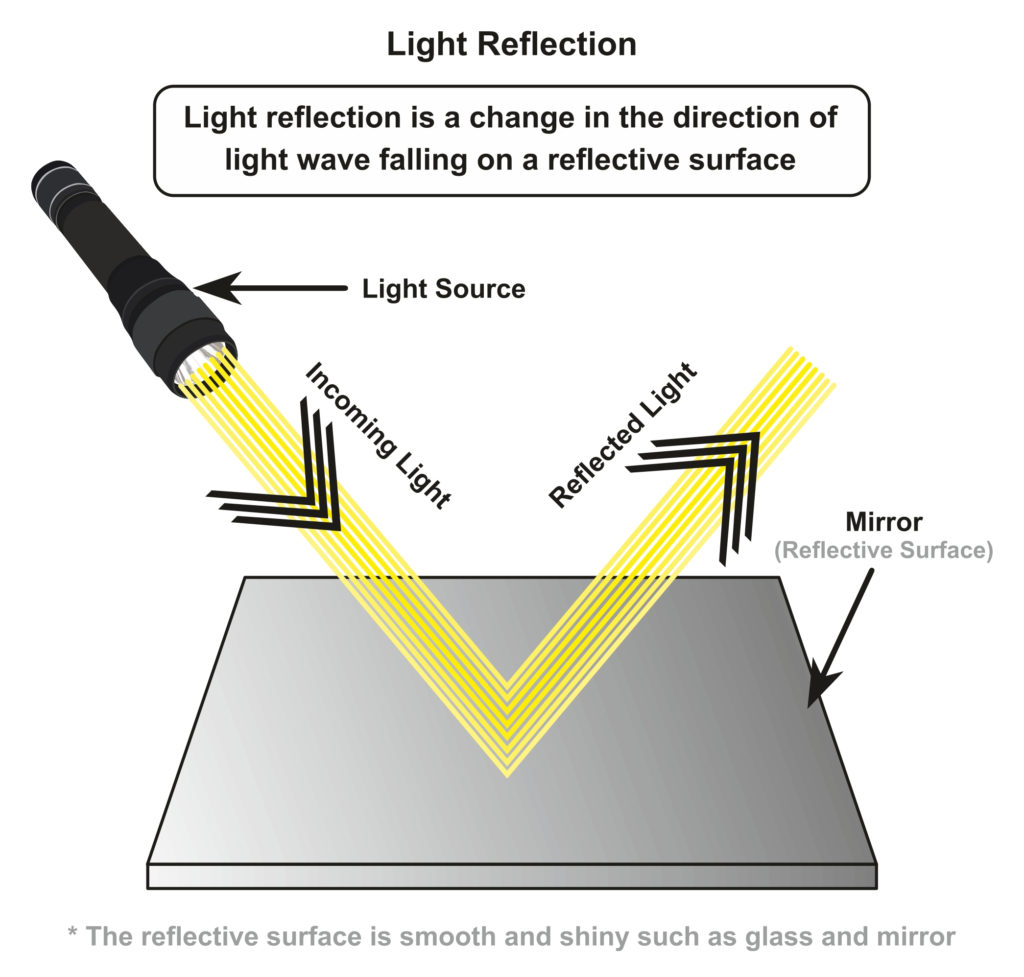
If the path of the beam of light changes ( you move the torch or the mirror ) the path of the reflected beam also changes.
How to make a light maze
This activity helps children understand that light travels in straight lines but can be reflected.
What you need to make a light maze
Flashlight
Modelling clay – to hold the mirrors
Card and pens ( optional )
How to make a light maze
Light mazes can be set up as a structured exercise or completely open ended.
I slightly themed our mazes, but that’s obviously completely optional.
Light Maze 1 – Light up the road
This one is set up like a road. The idea is to find a way for the grey car to light up the road around both corners.
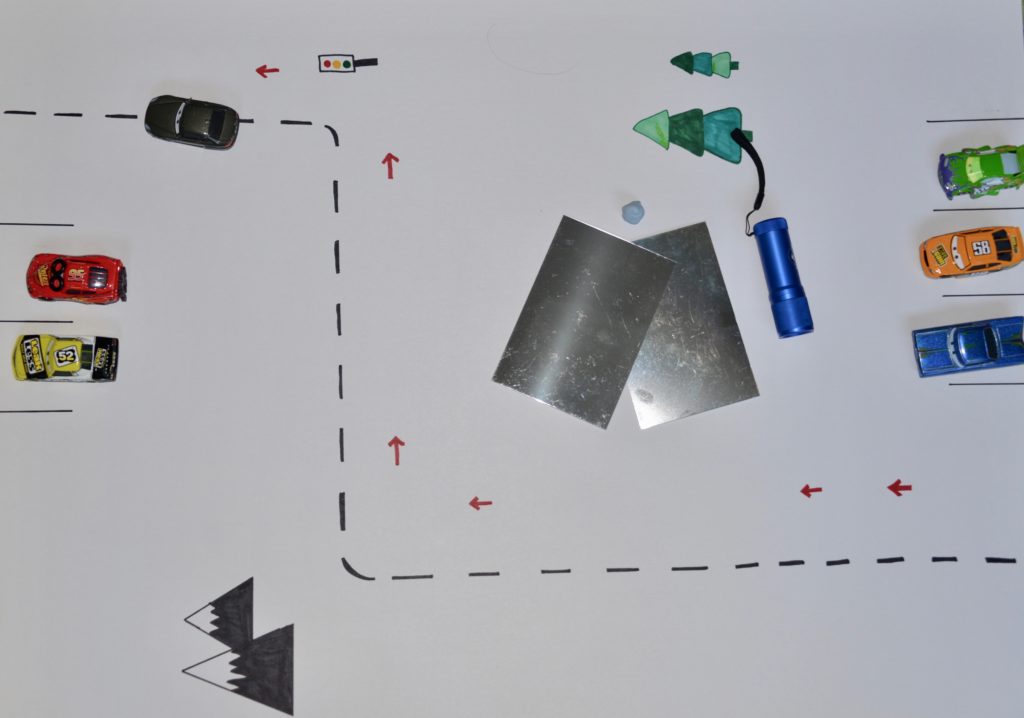
Two mirrors allow this to work nicely.

You can see here how each mirror reflects the light.

Light Maze 2 – Light up a safe route
This maze uses just one mirror. The idea is for children to find a way to help the toy soldiers see a safe path around the water and crocodile.
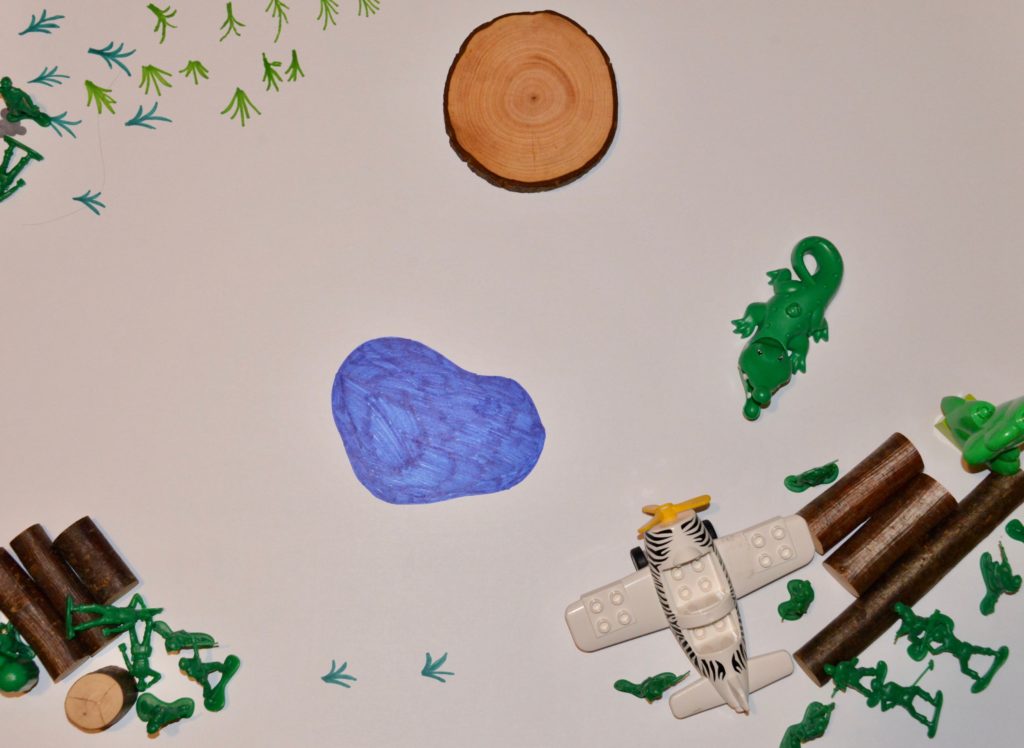
You can see in the photo how one mirror does this nicely.

Light Maze 3 – LEGO Light Maze
We used DUPLO for speed, but Lego would work just as well. I used lots of small mirrors to fit in the corners and had to cut some down to size.
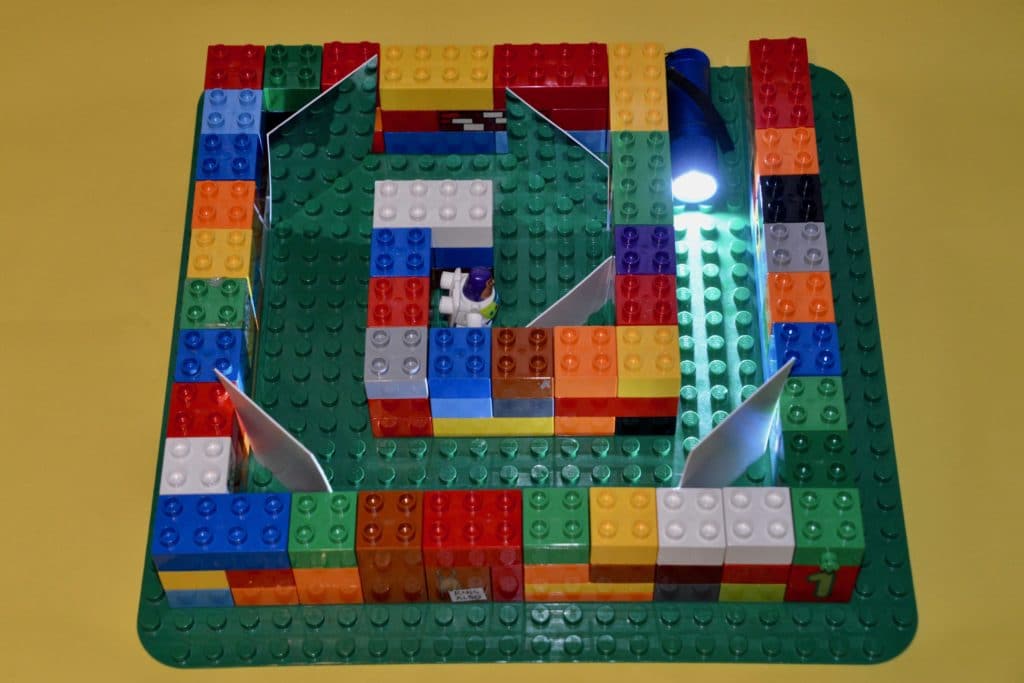
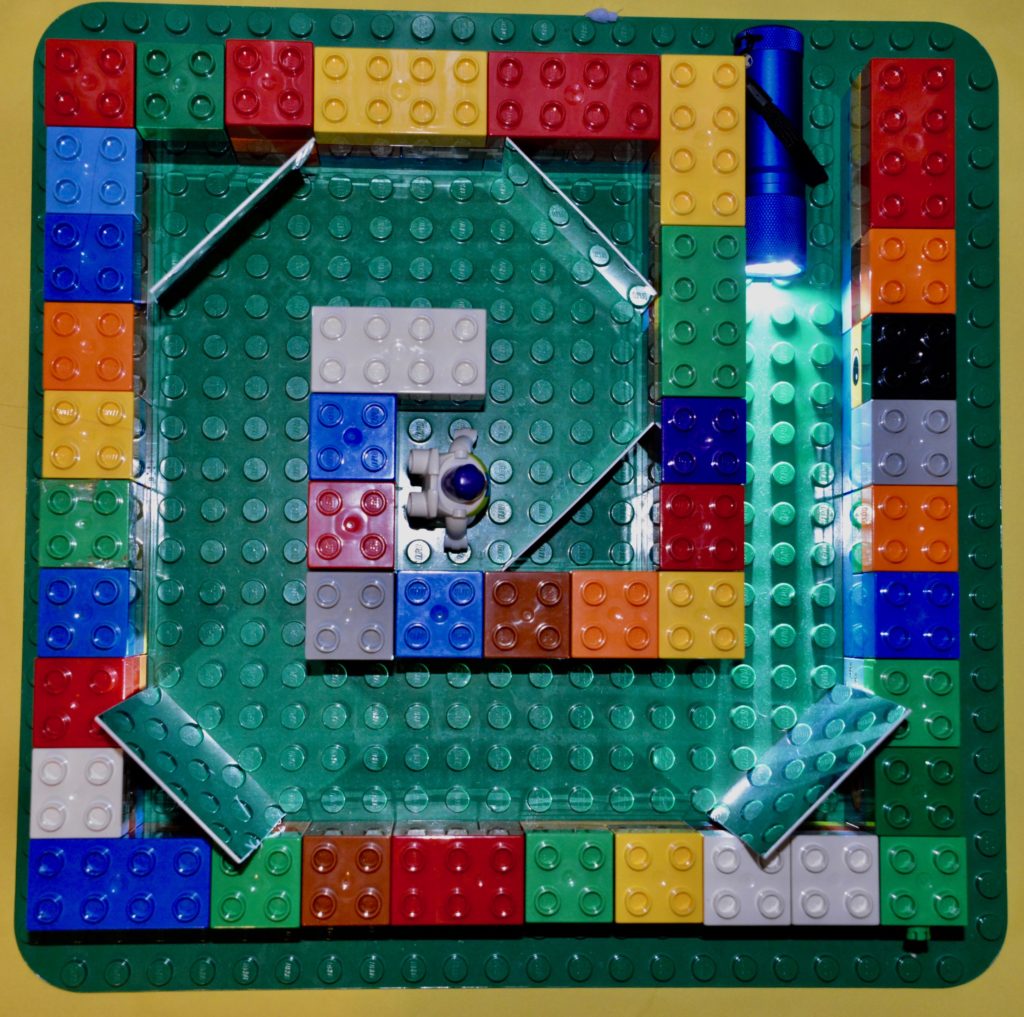

Light Maze Extension Task
Try to create a light maze without using the flashlight to test as you go along. Does it work when you turn on the light source?
Can you create a coloured maze using coloured sheets of cellophane?
Facts about light
We can see the moon as it reflects light from the sun.
Some animals make their own light! Fireflies are a good example of this.
You can split light into the colours of the rainbow using a prism.
Light travels at 299,792,458 meters per second.
Light from the sun takes 8 minutes and 20 seconds to reach the Earth
Did you know most animals don’t recognise their reflection and often attack it?
More light experiments
Create circuits to light up a model village.
Make a rainbow with a prism
Find out why the sky looks blue.
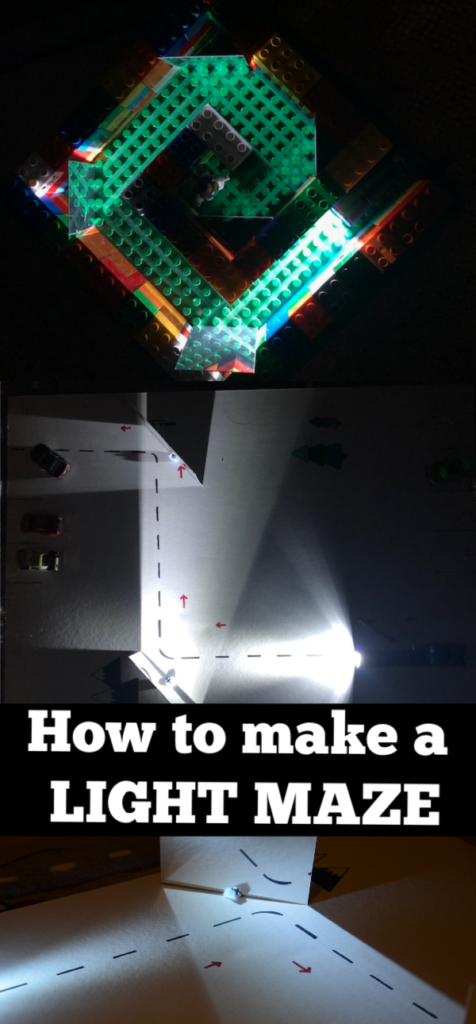
Last Updated on April 29, 2024 by Emma Vanstone

Hi!
Fantastic website and terrific resource! My students loved it! On your light maze experiment though, it says that the speed of light is 299,792,458 miles per second. That is not correct. It is 299,792,458 METERS per second, or 186,282 miles per second.
Sorry to be picky, but I’m a science teacher and I used your experiment in class. I was not the one who saw your error originally, it was one of my seventh grade students. Now I know that they were paying attention!
Thanks,
Dave Wilson
Science Teacher
Thank you, that is now corrected!